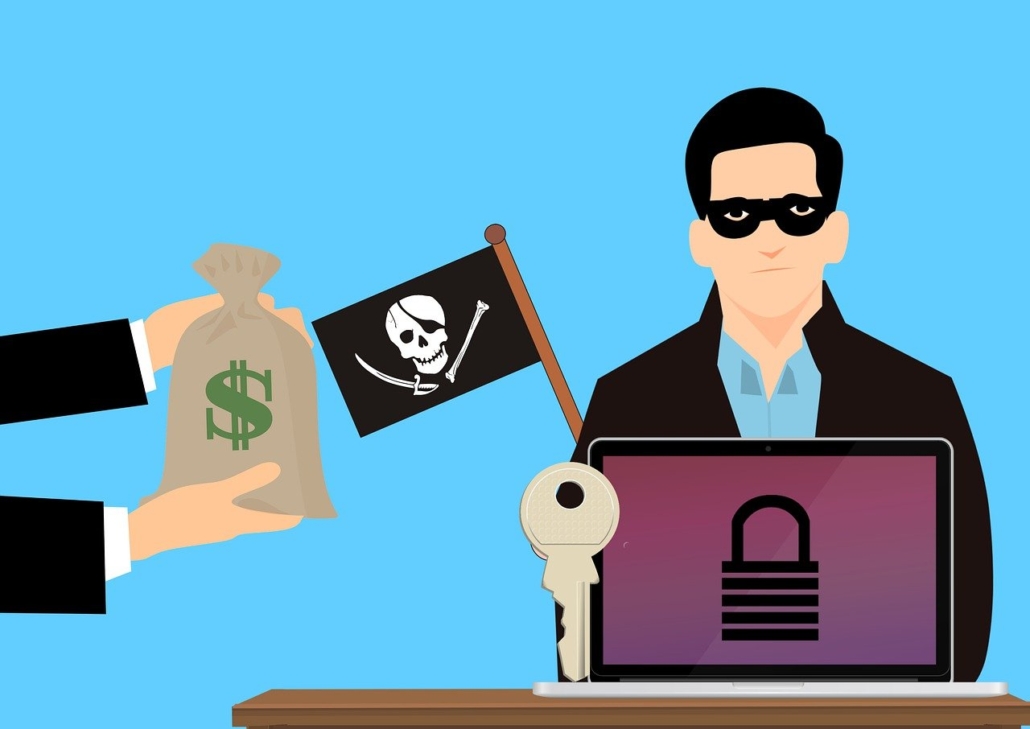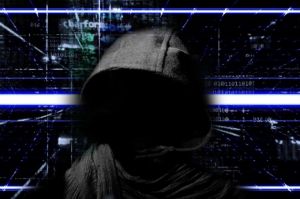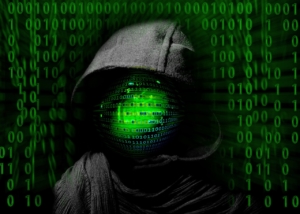TOP 10 Vital Strategies for Healthcare (or ANY) Organizations to Prevent Ransomware Attacks
Change Healthcare, a major U.S. healthcare company, reportedly paid $22 million to the BlackCat ransomware group after a cyberattack disrupted services nationwide. However, the cybercriminal who facilitated the attack claims they were cheated out of their share of the ransom, leaving sensitive data intact.

According to researchers, a hacker forum post suggested that UnitedHealth Group paid $22 million to regain access to data and systems encrypted by the “Blackcat” ransomware gang. While neither UnitedHealth nor the hackers have commented on the alleged payment, a cryptocurrency tracing firm partly supported the claim.
It’s common for large companies hit by ransomware attacks to pay hackers to restore control, especially after significant disruptions. The forum post, implicated a Blackcat partner in the intrusion into UnitedHealth and included a link showing the transfer of about 350 bitcoins, valued at around $23 million, between digital wallets.
The attack has caused financial strain for medical providers, leading to challenges such as delaying treatments and struggling to cover expenses. Lawmakers and industry leaders are pressuring the government for relief measures, including accelerated payments for Medicare providers.
Despite these efforts, the shutdown of Change Healthcare’s operations has left providers without vital insurance approvals and payments, exacerbating financial pressures. UnitedHealth Group, which owns Change Healthcare, has not provided a timeline for restoring operations, and the attack highlights the vulnerability of patient data in interconnected healthcare systems.
While some operational challenges have been addressed, the prolonged shutdown has left providers grappling with unpaid claims and uncertainty about the future.
The hospital industry has called for emergency funding, criticizing United’s response and government initiatives like loan programs as insufficient. Providers, such as therapists and cancer centers, are facing financial strain and uncertainty as they seek alternative payment clearinghouses and struggle to cover expenses.
Lawmakers are advocating for additional support to ensure providers can continue offering comprehensive care amid the ongoing disruption.
In an era of increasing cyber threats, healthcare organizations are particularly vulnerable to ransomware attacks due to the sensitive nature of patient data and the criticality of uninterrupted services. Ransomware attacks can disrupt operations, compromise patient confidentiality, and result in significant financial losses. However, with proactive measures and robust cybersecurity practices, healthcare organizations can strengthen their defenses against ransomware threats. Here are ten essential tips for preventing ransomware attacks:
1. Implement Comprehensive Security Awareness Training: Educate all staff members about the risks associated with ransomware attacks and the importance of cybersecurity best practices. Regular training sessions should cover topics such as identifying phishing emails, avoiding suspicious links and attachments, and reporting potential security incidents promptly.
2. Keep Software and Systems Up to Date: Regularly update all software, operating systems, and firmware to patch known vulnerabilities. Outdated software and systems are often exploited by cybercriminals to gain unauthorized access to healthcare networks. Implement automated patch management systems to ensure timely updates across all devices and endpoints.
3. Deploy Next-Generation Antivirus Solutions: Traditional antivirus software may not offer sufficient protection against evolving ransomware threats. Invest in next-generation antivirus solutions that utilize advanced threat detection techniques, such as behavior analysis, machine learning, and endpoint detection and response (EDR) capabilities. These solutions can detect and mitigate ransomware attacks in real-time.
4. Implement Least Privilege Access Controls: Restrict user privileges to the minimum level necessary for performing job functions. Limiting access rights reduces the likelihood of ransomware spreading laterally across the network in the event of a breach. Implement strong authentication mechanisms, such as multi-factor authentication (MFA), to prevent unauthorized access to sensitive data and systems.
5. Enable Network Segmentation: Segment the network into distinct zones or segments to contain the spread of ransomware in the event of a breach. Implement strict access controls and firewall rules to regulate traffic between network segments. Isolate critical systems and sensitive data to minimize the impact of ransomware attacks on essential healthcare services.
6. Regularly Back Up Data: Maintain regular backups of critical data and systems to facilitate timely recovery in the event of a ransomware attack. Backups should be stored securely offline or in a separate, isolated network environment to prevent them from being compromised by ransomware. Test backup and recovery procedures regularly to ensure their effectiveness.
7. Conduct Regular Vulnerability Assessments and Penetration Testing: Identify and remediate security vulnerabilities proactively through regular vulnerability assessments and penetration testing. Assess the security posture of networks, systems, and applications to identify weaknesses that could be exploited by ransomware attackers. Address identified vulnerabilities promptly to reduce the risk of exploitation.
8. Develop and Test an Incident Response Plan: Establish a comprehensive incident response plan that outlines procedures for responding to ransomware attacks and other security incidents. Define roles and responsibilities, escalation procedures, and communication protocols to ensure a coordinated response. Conduct tabletop exercises and simulated drills to test the effectiveness of the incident response plan.
9. Monitor Network Activity and Anomalies: Implement robust monitoring tools and security information and event management (SIEM) solutions to monitor network activity and detect anomalous behavior indicative of ransomware activity. Configure alerting mechanisms to notify security teams of potential security incidents in real-time. Investigate and respond to alerts promptly to mitigate threats effectively.
10. Foster a Culture of Cybersecurity Awareness and Vigilance: Cultivate a culture of cybersecurity awareness and vigilance among employees, encouraging them to remain vigilant against potential threats and report any suspicious activities promptly. Promote open communication channels for reporting security incidents and provide incentives for proactive security behavior.
By adopting these ten essential strategies, healthcare organizations can enhance their resilience to ransomware attacks and safeguard patient data, critical systems, and essential healthcare services. Proactive cybersecurity measures, combined with comprehensive training, regular updates, and robust incident response capabilities, are key to mitigating the risk of ransomware threats in the healthcare OR ANY sector.
Robert Siciliano CSP, CSI, CITRMS is a security expert and private investigator with 30+ years experience, #1 Best Selling Amazon.com author of 5 books, and the architect of the CSI Protection certification; a Cyber Social Identity and Personal Protection security awareness training program. He is a frequent speaker and media commentator, and CEO of Safr.Me and Head Trainer at ProtectNowLLC.com.

 While the
While the  Hacking the Ransomware Hackers
Hacking the Ransomware Hackers Risks from ransomware have changed over the last several years. These were once regarded as nuisance attacks on unwary, underprepared victims, who would have their systems and data held for a cryptocurrency “ransom” that would provide a de-encryption key. Threats to post data on the Dark Web were typically an intimidation tactic aimed at victims who refused to pay the criminals.
Risks from ransomware have changed over the last several years. These were once regarded as nuisance attacks on unwary, underprepared victims, who would have their systems and data held for a cryptocurrency “ransom” that would provide a de-encryption key. Threats to post data on the Dark Web were typically an intimidation tactic aimed at victims who refused to pay the criminals.
 Slowly, the motivation behind the hacking is being understood. At first, it seemed obvious, the stolen data being personally identifiable information, which is what was taken can be used for new account fraud. But in government breaches, they usually look for military plans, blueprints, and documents that deal with policy.
Slowly, the motivation behind the hacking is being understood. At first, it seemed obvious, the stolen data being personally identifiable information, which is what was taken can be used for new account fraud. But in government breaches, they usually look for military plans, blueprints, and documents that deal with policy. If you’re sucked into a ransomware scam, you’ll likely be charged at least one bitcoin for the cyber key to unlock your computer’s files—that are being held hostage by hackers.
If you’re sucked into a ransomware scam, you’ll likely be charged at least one bitcoin for the cyber key to unlock your computer’s files—that are being held hostage by hackers. Recently a ransomware attacker struck the network of the University of Calgary. An article at arstechnica.com says that the institution’s IT experts have made some headway in isolating the
Recently a ransomware attacker struck the network of the University of Calgary. An article at arstechnica.com says that the institution’s IT experts have made some headway in isolating the  Here are five things to know about passwords:
Here are five things to know about passwords: The attack begins when you’re lured, by a cybercriminal, into clicking a malicious link that downloads malware, such as CDT-Locker. Hackers are skilled at getting potential victims to click on these links, such as a phony e-mail, apparently from a company you do business with, luring you into clicking on a link or opening its attachment.
The attack begins when you’re lured, by a cybercriminal, into clicking a malicious link that downloads malware, such as CDT-Locker. Hackers are skilled at getting potential victims to click on these links, such as a phony e-mail, apparently from a company you do business with, luring you into clicking on a link or opening its attachment.























